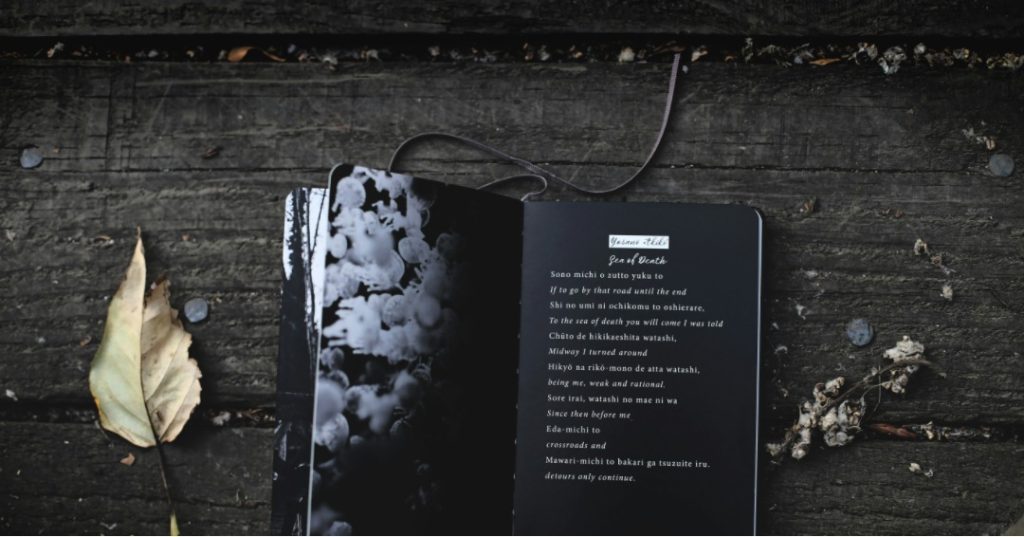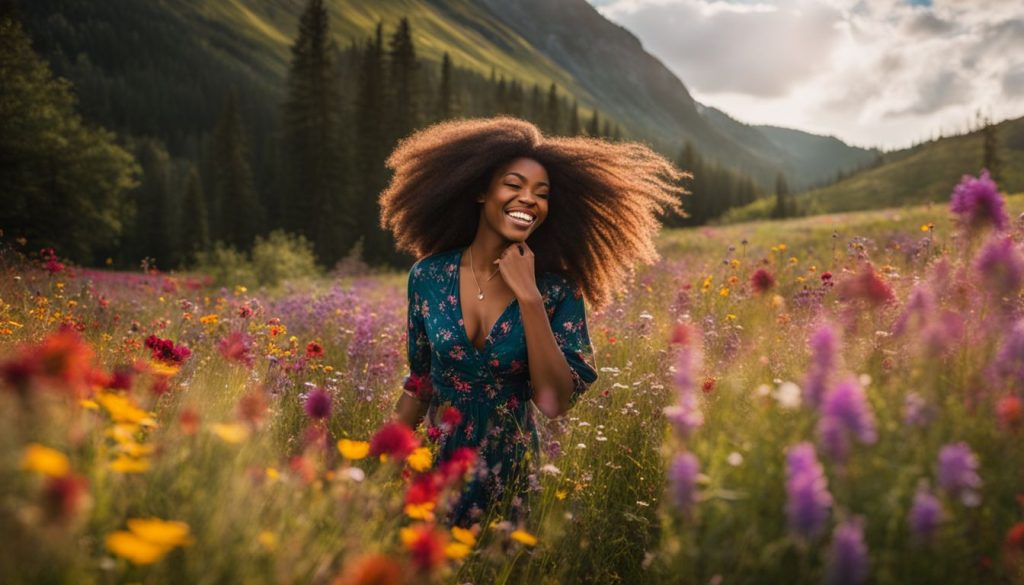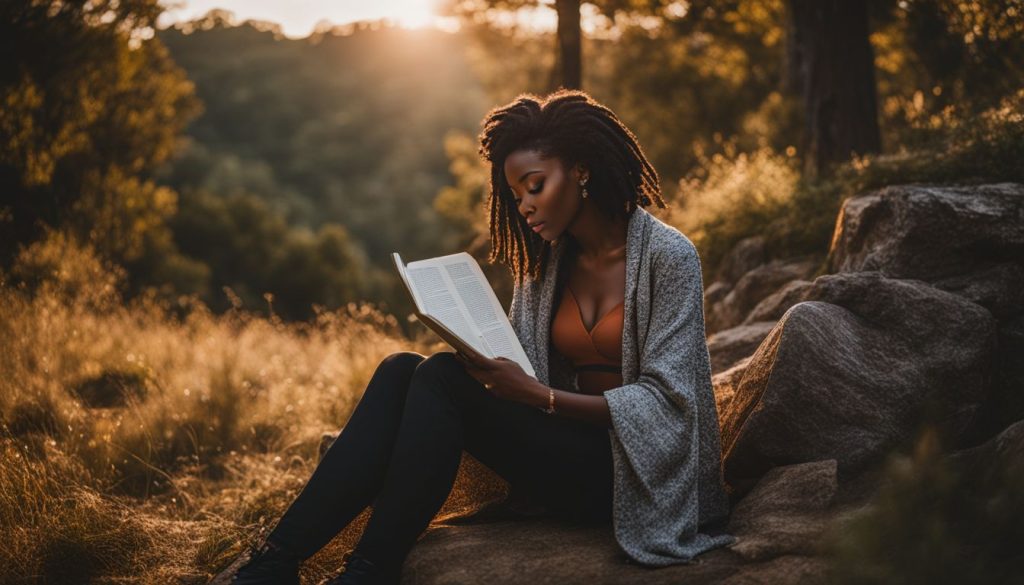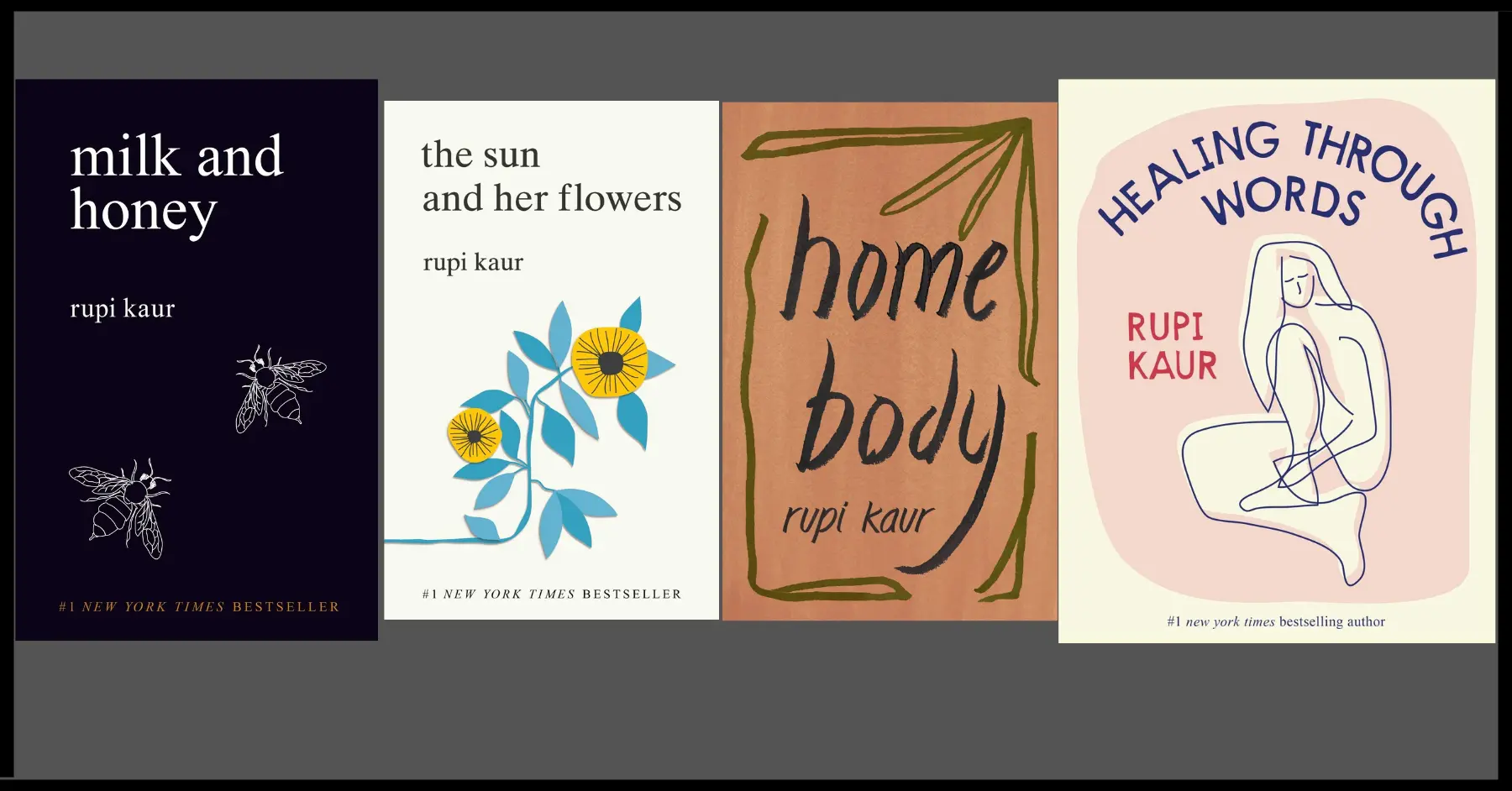All About Poetry

Many people need help understanding and appreciating poetry. Interestingly, poetry is one of the oldest forms of art, dating back thousands of years.
This article aims to show you the beauty and power contained within poems.
Discover why poetry still captures hearts around the world.
Key Takeaways:
- Poetry uses words and rhythm to express emotions, tell stories, and capture images. It makes language powerful by adding music to the words, which creates vivid pictures in our minds.
- There are many forms of poetry, from traditional types like sonnets and haikus to modern styles such as slam poetry and prose poetry. Each form offers different ways to explore emotions and ideas.
- Poems connect people across cultures and periods by capturing complex feelings in just a few lines. This art form helps us understand each other better by sharing personal experiences through language.
- Poetry serves as a tool for social change, addressing issues like inequality and environmental concerns. By using metaphor and imagery, poets inspire action toward making the world better.
- Reading or writing poems can help individuals express their thoughts and feelings when it’s hard to find the right words. Poetry builds communities where people feel understood by sharing their experiences with others.
Table of Contents
What is Poetry?

Poetry is an art that uses words to capture feelings, stories, and ideas uniquely. It combines language and rhythm to touch hearts and spark the imagination.
Defining poetry
Poetry is the art of using language in a way that stirs emotions and paints pictures in the mind.
Each word and line is chosen carefully to create a specific feeling or image.
This form of writing goes beyond ordinary sentences by adding rhythm, rhyme, and often metaphor to express ideas more powerfully.
Different people see poetry in unique ways, much like looking at art.
Some might find meaning in the sound of the words together; others might focus on how poetry makes them feel.
No matter the style, from classic verses to modern slam poetry, this literary form connects deeply with readers and listeners around the world.
Different perspectives and interpretations
Defining poetry sets the stage, but how people view and explain it varies greatly.
Some see poetry as a way to capture beauty, while others believe it’s about expressing deep emotions that are hard to talk about.
This shows that poetry is not just one thing; its meaning changes depending on who you ask.
Artists and readers from different times and places have their takes on what makes poetry unique.
For example, ancient societies used it for storytelling and to preserve history, whereas today’s poets might focus more on personal feelings or social issues.
This diversity in understanding and usage highlights how flexible and impactful poetry can be across cultures and eras.
The power of language and rhythm
Language and rhythm work together in poetry to bring words to life. Poets choose and arrange language to make a substantial impact on readers.
They use rhythm, which is the beat or pace of the words, to add music to their poems.
This combination helps create vivid images and emotions.
Rhythm also helps people remember poems when they recite them aloud. Think about your favorite song and how its beat stays with you.
Poetry does the same thing with its rhythms, making feelings and ideas stick in your mind long after you’ve read or heard them.
The language chosen carefully alongside rhythm turns ordinary phrases into memorable poetry that moves us.
A universal and timeless art form
Poetry transcends culture, language, and time. It serves as a bridge linking the ancient with the modern.
People from every corner of the globe find solace, joy, and understanding through poems that echo their thoughts and feelings.
Poetry has the unique power to capture complex emotions and experiences in just a few lines, making it accessible to everyone regardless of age or background.
Through its rhythm, meter, and carefully chosen words, poetry celebrates life’s diversity while highlighting our shared human experience.
It remains relevant across centuries by adapting to changing societies yet maintaining its essence.
As both an art form and a means of expression, poetry continuously enriches literary history by drawing on tradition while embracing innovation.
Elements and Forms of Poetry

Poetry encompasses a wide array of elements and forms that allow poets to express themselves in unique and compelling ways.
Meter, rhyme, and structure are some of the key elements that define poetry and influence its rhythm and flow.
Form is another crucial aspect, with various styles such as sonnets, haikus, and free verse offering diverse ways for poets to experiment with language and imagery.
Each element of poetry contributes to the overall impact and effect of a poem on its reader.
For instance, the choice of rhyme scheme can evoke a sense of harmony or discord within a poem, while varying line lengths can create tension or release.
Understanding how these elements work together can help poets craft poems that engage readers on multiple levels and leave a lasting impression.
Exploring different forms of poetry allows writers to push their creative boundaries and challenge traditional conventions.
By experimenting with structures like acrostics or pantoums, poets can discover new ways to convey emotions or ideas effectively.
Ultimately, the elements and forms of poetry provide endless possibilities for expression, making it a dynamic art form that continues to evolve with each new generation of writers.
Literary Devices: alliteration, assonance, metaphor, etc.
Poets use alliteration to make their work sound catchy and memorable. This technique repeats the same starting sounds in nearby words, like “silver swans sing softly.”
Assonance is another trick where vowel sounds echo within words close to each other, creating a musical effect.
For instance, in the phrase “the rain in Spain stays mainly in the plain,” the repeated “ai” sound makes the line more appealing.
Metaphors are powerful tools that compare two things without using “like” or “as.” They help readers see ordinary objects in new ways.
Think of a metaphor as saying one thing is something else, such as “time is a thief.” It isn’t true, but it suggests time steals moments from our lives.
Moving on from these devices opens up a world of traditional and contemporary poetic forms like sonnets and slam poetry.
Traditional Forms: sonnet, villanelle, haiku, etc.
Poetry has many faces and forms, showing its beauty and complexity through various traditional styles.
These styles have stood the test of time, each carrying distinct rules and offering unique ways to express emotions and tell stories.
- Sonnet: This form is famous for its 14 lines and strict rhyme scheme. Often, sonnets explore themes like love, death, and nature. They come mainly in two types: the Italian (or Petrarchan) sonnet and the English (or Shakespearean) sonnet. The difference lies in their rhyme schemes and how they organize ideas.
- Villanelle: Recognized for its repeating lines and intricate pattern, the villanelle consists of 19 lines divided into five tercets (three-line stanzas) followed by a quatrain (four-line stanza). This form often deals with themes of obsession and returning thoughts or feelings.
- Haiku: Originating from Japan, this short form captures moments or images related to nature in just 17 syllables divided into three lines (5-7-5). Its simplicity and focus on imagery make it powerful for conveying vast ideas or emotions in a few words.
- Epic: Epics are long narrative poems that recount the heroic journeys or deeds of characters often embodying the values of their culture. Classics like Homer’s “The Odyssey” or Virgil’s “Aeneid” are prime examples, blending myth with history.
Contemporary Forms: prose poetry, slam poetry, etc.
Moving from the classic styles like sonnets and haikus, we dive into the vast ocean of contemporary poetry.
Modern poets experiment with new forms that push the boundaries of traditional poetry. These include prose poetry, slam poetry, and more.
- Prose Poetry blends the elements of prose and poetry to create a unique form. It lacks the line breaks typical of traditional poems. Instead, it presents poetic language in paragraph format. This style allows for a more natural flow of ideas, resembling spoken word while still using poetic devices like metaphor and alliteration.
- Slam Poetry is performed live and engages directly with the audience. Slam poets use their voices, gestures, and facial expressions to add an extra layer of meaning to their words. This form is competitive, often seen in poetry slams where poets perform their work and get scores from judges or the audience.
- Visual Poetry plays with text on the page to create a visual impact that complements the poem’s message. This can involve unusual placements of words or incorporating images alongside text. The layout becomes part of how readers experience the poem.
- Found Poetry takes existing texts and rearranges them into a poem. The original context is removed, giving new meaning to the words. Found poems can come from sources like books, magazines, or even mundane items like grocery lists.
- Micro-poetry focuses on short but impactful statements. Often shared on social media platforms, these poems get straight to the point in just a few lines or less than 140 characters. They make poetry accessible and shareable in today’s fast-paced world.
Genres and Uses of Poetry

One of the most compelling aspects of poetry is its ability to encompass a wide range of genres, each with its unique characteristics and uses.
From traditional forms like sonnets and haikus to more contemporary styles such as slam poetry and spoken word, there is a genre of poetry for every individual taste.
Lets take a looks at few genre examples below:
Lyrical, and epic poetry
Lyrical poetry, on the other hand, expresses personal emotions or thoughts. It often has a musical rhythm that makes you feel as if the poet is singing directly to you.
Emily Dickinson’s work showcases this beautifully with its deep exploration of inner feelings.
Epic poetry spans great lengths to recount tales of heroes and their adventures. homer’s “The Odyssey” is a classic example, taking us on Odysseus’ epic journey home from war.
These poems combine storytelling with expansive settings and notable deeds, immortalizing characters through grand narratives.
Elegiac, and fable verse
Elegiac verse deals with themes of loss and mourning, expressing sorrow over what’s gone. It captures deep emotions, helping people find words for their grief.
Fable verse tells stories with morals, using animals or inanimate objects as characters. These tales teach lessons about life’s truths in simple yet profound ways.
Dramatic and speculative poetry
Dramatic poetry brings characters to life through dialogue and performance.
It’s like a play in poem form, where emotions run high and stories unfold in powerful verses.
This genre often captures intense human experiences, allowing readers or viewers to feel as if they are part of the scene.
Speculative poetry ventures into the realms of fantasy, science fiction, and other imaginative landscapes.
It uses language chosen and arranged with care to whisk readers away to worlds that defy our usual rules.
Here, poets wield their craft to explore what-ifs, painting possibilities that stretch beyond the boundaries of reality.
Through vivid imagery and inventive use of poetic elements such as metaphor and rhythm, these poems spark curiosity about the universe’s endless mysteries.
Poetry for social commentary and activism
Poetry has long been a powerful tool for social commentary and activism. One good example of this is Guyanese poet Martin Carter.
Poets use their words to highlight injustices, spark change, and call attention to important issues.
Through metaphor, rhythm, and vivid imagery, they convey messages about society’s challenges in ways that articles or speeches sometimes cannot.
This form of poetry turns personal feelings into a universal call to action. Several American poets have also gained recognition for their work in this area.
Their poems often serve as a voice for the voiceless, pushing readers to consider perspectives beyond their own experiences.
By addressing topics such as inequality, racism, environmental concerns, and human rights through poetry used for activism, these poets inspire movements and bring about social change.
Their work proves that poetry possesses the power not just to reflect on the world but also to influence its course toward a better future.
The Impact of Poetry
Poetry touches hearts and changes minds. It bridges gaps between cultures, healing wounds with its words.
Poems give people a unique way to express their feelings and thoughts.
Through careful choice of words and phrases, individuals can share deeply personal experiences or emotions that might be hard to say out loud.
This form of expression allows for a concentrated imaginative awareness of experience, which helps writers and readers connect on a profound level.
It provides a special kind of emotional release not easily found elsewhere.
Next, the power of poetry goes beyond just personal benefit; it brings people together, forming strong communities.
– Connecting and building communities
Poetry goes beyond personal expression and emotional release; it also plays a crucial role in bringing people together.
By sharing poems, individuals find common ground, realize they are not alone in their thoughts and feelings, and form supportive networks.
Such connections create communities where members feel understood and valued.
Through public readings, poetry slams, and online forums, poets and listeners forge strong bonds.
These gatherings become spaces for celebration, healing, and the exchange of ideas.
They allow diverse voices to be heard and respected, cultivating a sense of unity among participants from different backgrounds.
– Preserving history and culture
Poems serve as a bridge to our past, capturing the essence of moments that define human history and culture.
Through their verses, poets encapsulate the emotions, struggles, and triumphs of people across different eras.
This art form allows us to experience the world from numerous perspectives, fostering a deeper connection with ancestors and ancient societies.
Verses carry the stories of great battles, significant events, and everyday life from centuries ago directly to modern readers.
They also play a crucial role in passing down traditions and cultural identities from one generation to another.
Rhythms and rhymes make it easier for memories to stick in our minds, ensuring teachings and values are preserved over time.
By reading poetry that reflects diverse cultures’ histories and heritage, individuals gain insights into civilizations’ complexities beyond their own immediate experiences.
This shared knowledge strengthens bonds within communities while promoting understanding among different groups.
– Promoting empathy and understanding
Poetry breaks down barriers between people. It uses powerful language and rhythm to express feelings and experiences that are often hard to communicate.
By sharing personal stories or emotions through poetry, writers invite readers into their world.
This connection fosters empathy as readers see the world from another’s perspective.
Using metaphor and other literary devices, poetry paints vivid pictures of life’s joys and struggles.
Readers find common ground in these shared human experiences, building a sense of understanding across different backgrounds.
Poetry becomes a bridge, uniting individuals by highlighting our shared emotions and journeys.
Final Thoughts on Poetry
In conclusion, poetry is a complex and multifaceted art form that transcends conventional language and communication.
By exploring its various elements and forms, we can better appreciate the depth of emotion, beauty, and power that poetry can evoke.
From rhyme and meter to imagery and symbolism, each element plays a crucial role in shaping the overall impact of a poem.
Through studying poetry, we not only enrich our understanding of literature but also gain insight into the human experience itself.
Let us continue to immerse ourselves in the world of poetry, unlocking its secrets and embracing its transformative potential.
FAQs About Poetry
1. What is poetry?
Poetry is a form of writing that uses a specific arrangement of words to create a strong emotional response through rhythm, sound, and meaning.
2. How do people try to define poetry?
People attempt to define poetry by focusing on its ability to express ideas and emotions in a compact, metrical, and often rhythmic language that stands out from prose.
3. Can poetry include both written and spoken forms?
Yes! Poetry can be found in written forms like books or online, and in spoken forms such as performances or recordings, showcasing its versatility.
4. Why does poetry use different styles and structures?
Poetry uses various styles and structures to illustrate complex feelings and ideas uniquely, making each poem recognizable by its chosen pattern.
5. How does poetry connect with emotions?
Poetry aims at touching hearts by using carefully chosen words arranged in a way that evokes specific emotional responses from readers or listeners.
6. Is there any difference between poetry and prose?
Yes, there’s a significant difference: while prose focuses on clear expression without strict structure, poetry often relies on meter, rhyme schemes, or free verse patterns for artistic expression.
References:
- https://www.britannica.com/art/poetry
- https://www.sparknotes.com/lit/odyssey/summary/
- https://thewritepractice.com/evoke-emotions/
- Spike. “The Influence of Culture on Poetry – Poems Please.” Poems Please, 9 Aug. 2023, poemsplease.com/the-influence-of-culture-on-poetry/#:~:text=Poetry%20is%20vital%20in%20a,connect%20people%20from%20different%20backgrounds.
- Das Gupta, Sudip. “10 Important Elements of Poetry.” Poem Analysis, 26 Nov. 2023, poemanalysis.com/poetry-explained/elements-of-poetry.
- Education, Kit Kittelstad M. A. “Examples of Poetry Genres: Major Styles Explained.” YourDictionary, 9 July 2021, www.yourdictionary.com/articles/examples-poetry-genres.
- https://www.inspirethemind.org/post/how-poetry-can-bring-people-together-and-practical-ways-to-do-so

